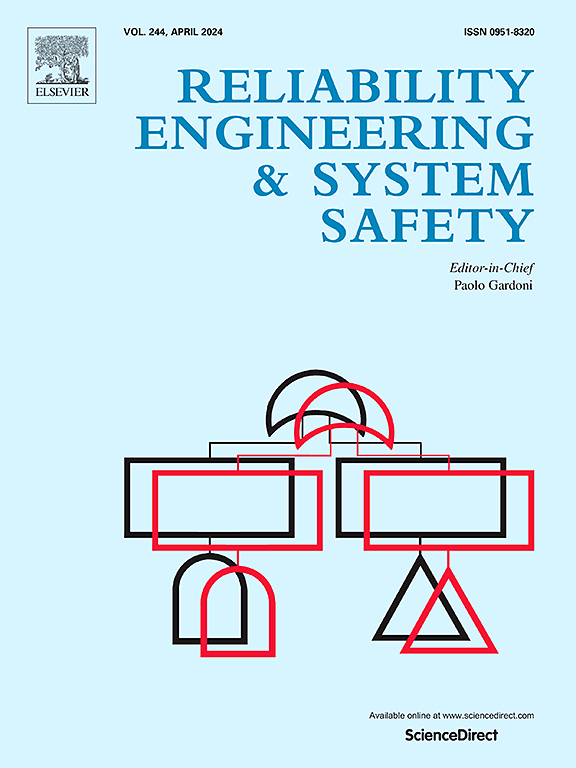基于组合降维自适应多项式混沌展开的高维可靠性分析
IF 11
1区 工程技术
Q1 ENGINEERING, INDUSTRIAL
引用次数: 0
摘要
多项式混沌展开(PCE)越来越多地应用于各种工程领域的结构可靠性分析。然而,由于维度的诅咒,对于高维问题,完整的PCE计算通常是无法承受的。提出了一种基于组合降维自适应多项式混沌展开(CDR-PCE)的高维可靠性分析方法。首先利用不同核函数和低保真模型梯度构造变换矩阵,提出一种组合降维(CDR)方法,将高维输入数据映射到低维空间进行有效降维。然后,利用麻雀搜索算法在求解过程中优化多项式阶数和正则化参数,构造自适应PCE模型。最后提出了一种新的CDR-PCE框架,将CDR方法纳入自适应PCE模型,以提高效率和准确性。通过与几种最新方法的比较,对所提出的CDR-PCE的性能进行了五个不同维数和复杂性的数值示例的评估。结果表明,该方法在高维可靠性分析的精度、效率和鲁棒性方面均优于基准算法,对于具有高度非线性的复杂工程结构,其优越性更加显著。本文章由计算机程序翻译,如有差异,请以英文原文为准。
Combined dimensionality reduction based adaptive polynomial chaos expansion for high-dimensional reliability analysis
Polynomial chaos expansion (PCE) is increasingly used for structural reliability analysis in various engineering fields. However, due to the curse of dimensionality, full PCE computation is often unaffordable for high-dimensional problems. In this paper, a combined dimensionality reduction based adaptive polynomial chaos expansion (CDR-PCE) is proposed for high-dimensional reliability analysis. Taking advantage of different kernel functions and low-fidelity model gradients to construct transformation matrix, a combined dimensionality reduction (CDR) method is first introduced to map high-dimensional input data to a low-dimensional space for effective dimension reduction. Then, an adaptive PCE model is constructed by employing the sparrow search algorithm to optimize the polynomial order and regularization parameter in the solving process of recently developed Bregman-iterative greedy coordinate descent. A novel CDR-PCE framework is finally conceived by incorporating the CDR method into the adaptive PCE model for enhancing both efficiency and accuracy. The performance of the proposed CDR-PCE is evaluated on five numerical examples of varying dimensionality and complexity through comparison with several state-of-the-art methods. Results show that the proposed method is superior to the benchmark algorithms in terms of accuracy, efficiency and robustness for high-dimensional reliability analysis, and its superiority becomes more significant for complex engineering structures with high nonlinearities.
求助全文
通过发布文献求助,成功后即可免费获取论文全文。
去求助
来源期刊

Reliability Engineering & System Safety
管理科学-工程:工业
CiteScore
15.20
自引率
39.50%
发文量
621
审稿时长
67 days
期刊介绍:
Elsevier publishes Reliability Engineering & System Safety in association with the European Safety and Reliability Association and the Safety Engineering and Risk Analysis Division. The international journal is devoted to developing and applying methods to enhance the safety and reliability of complex technological systems, like nuclear power plants, chemical plants, hazardous waste facilities, space systems, offshore and maritime systems, transportation systems, constructed infrastructure, and manufacturing plants. The journal normally publishes only articles that involve the analysis of substantive problems related to the reliability of complex systems or present techniques and/or theoretical results that have a discernable relationship to the solution of such problems. An important aim is to balance academic material and practical applications.
 求助内容:
求助内容: 应助结果提醒方式:
应助结果提醒方式:


